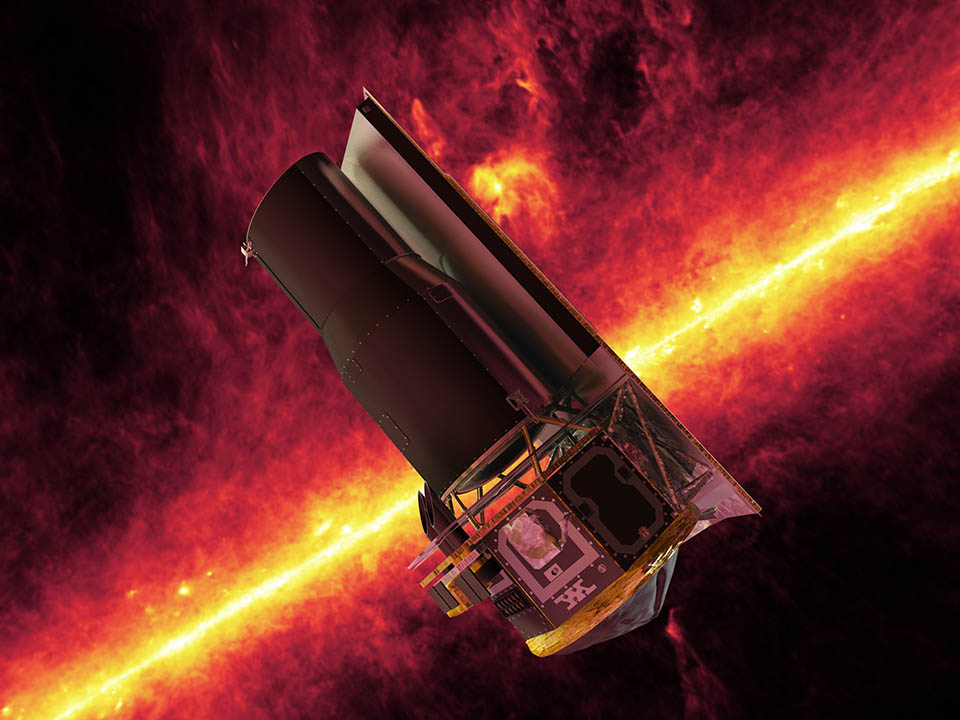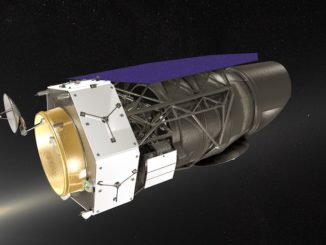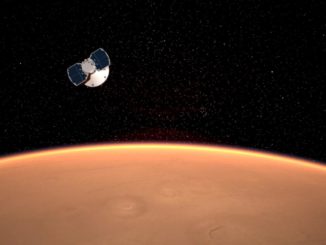
Management of NASA’s Spitzer Space Telescope could be turned over to an academic institution or private operator in 2019 once the space agency’s funding for the observatory runs out, a senior NASA manager said this week.
Launched in August 2003 on a planned five-year mission, the infrared observatory is getting farther from Earth as it circles the sun, complicating communications with the telescope. But the mission continues to make observations, yielding discoveries about worlds around other stars, faraway galaxies that populated the early universe, and planets and asteroids within our own solar system.
NASA last year agreed to continue funding the Spitzer mission through early 2019, keeping the observatory active through the commissioning of the James Webb Space Telescope, a $10 billion flagship project that will represent perhaps the biggest leap in space astronomy since the launch of the Hubble Space Telescope in 1990.
Spitzer, which covers much of the same infrared wavelengths as JWST, could identify targets for follow-up observations by Webb. Parallel imaging of the same targets by Spitzer and JWST could also aid in calibration of the new telescope.
While Spitzer operations will be more challenging as the telescope flies greater distances from Earth, the spacecraft and instruments could remain functional after NASA’s mission-end date in 2019.
Operated by NASA’s Jet Propulsion Laboratory with engineering support from spacecraft-builder Lockheed Martin, Spitzer could be turned over to a private institution after NASA’s support for the mission ends in 2019, according to Paul Hertz, director of the agency’s astrophysics division.
“We are certainly open to a partnership proposal from any U.S. institution that would like to operate Spitzer on non-NASA funding beyond the NASA-funded mission, and I’ve heard there are people discussing this,” Hertz said Wednesday in a meeting of NASA’s Astrophysics Advisory Committee. “I just want to make sure everyone knows that we would welcome such an inquiry, proposal, or discussion.”
If an outside funding source is found and approved, Spitzer would be loaned to a private operator, but NASA would retain ownership and responsibility for liability, Hertz said.
The model closely follows the way NASA turned over control of the GALEX astronomy satellite in Earth orbit to Caltech, which used private funds to continue operating the mission once NASA’s commitment ended. That agreement was the first of its type for a government-owned science probe.
“We loan (it), and then they have to pay all the money it takes to operate it, and then at the end of the funded mission, we take it back and do safe disposal of the spacecraft,” Hertz said.
A review of Spitzer’s scientific potential last year by a panel of independent researchers recommended NASA continue the mission into early 2019. But the reviewers concluded NASA should divert Spitzer’s funding to more worthwhile projects shortly after JWST’s launch.
Faced with a limited federal budget, NASA must balance the need to develop future, more capable missions with keeping older spacecraft operational. A similar “senior review” of NASA’s operating astrophysics missions in 2014 recommended NASA end its support of Spitzer that year, but top NASA officials overruled the panel after Spitzer found ways to operate the mission for less money.
“There’s certainly good science to be done (with Spitzer) that can’t fit into our funding plan,” Hertz said Wednesday.
NASA’s budget request for Spitzer operations in fiscal year 2018, which begins Oct. 1, is for $11 million.
Spitzer was the last of four telescopes to launch in NASA’s Great Observatories program, joining Hubble, the Compton Gamma-Ray Observatory, and the Chandra X-ray Observatory.
A Delta 2 rocket launched Spitzer from Cape Canaveral into an Earth-trailing orbit around the sun. The telescope circles the sun slightly slower than Earth, so Spitzer gets a little farther away each day. As of Saturday, the telescope was approximately 146 million miles (235 million kilometers) from Earth.
The range to Spitzer, and its closer proximity to the sun as viewed from Earth, makes communications with the observatory more difficult over time. Spitzer is also exposed to hotter temperatures as it gets farther from Earth because it must point its antenna at higher angles toward the sun to stay in contact with ground controllers.
One of Spitzer’s most recent accomplishments was its role in the discovery of seven Earth-sized planets around a star 40 light-years, or about 235 trillion miles (378 trillion kilometers) from Earth. The TRAPPIST-1 system, announced in February, holds the record for the most potentially habitable planets around a single star outside our solar system, scientists said.
Email the author.
Follow Stephen Clark on Twitter: @StephenClark1.



